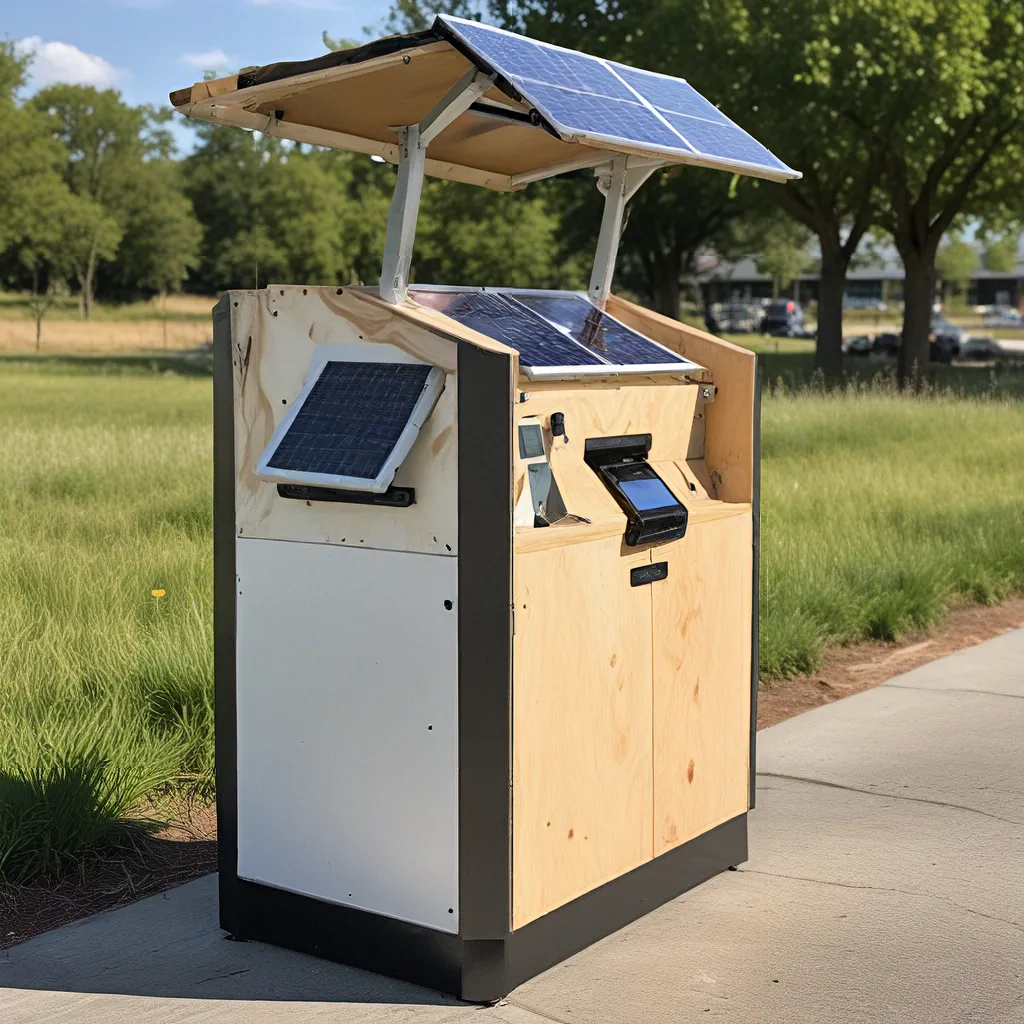
What do you get when you combine a shipping container, some solar panels, and a penchant for all things electric? Well, my friend, you get your very own off-grid solar charging station – the stuff of DIY dreams! I recently took on this project, and let me tell you, it’s been one wild ride.
The Shipping Container Saga
It all started when I found myself the proud owner of a shipping container in my backyard. Now, these engineering marvels may seem like just glorified metal boxes, but trust me, they’re the perfect canvas for a solar-powered project. Between my electric bikes, e-motorcycles, e-ATVs, and even an electric tractor, having a weather-sealed, solar-powered charging shed was a must-have.
As I discovered on Electrek, there are countless ways to harness the power of the sun and turn a shipping container into an off-grid oasis. But I’ll be honest, I didn’t exactly want to DIY the whole thing from scratch. That’s where a little retail therapy came in handy.
Embracing the Pre-Made Solution
I’ll admit, I may have taken the easy route by going with a pre-built solar generator system from Plug ‘n’ Save Energy Products. But hey, sometimes it’s just nice to have something arrive ready to work, you know? No need to reinvent the wheel when someone’s already done the hard part for you.
The key was finding a solution that would handle all the wiring, inverters, batteries, and whatnot. That’s where the Pecron system came in clutch. It had everything I needed to get this solar-powered party started. All I had to do was mount the panels, run the cables, and voila – instant off-grid charging station!
Measuring Twice, Cutting… Well, You Know the Drill
With the Pecron system in hand, it was time to get to work. First up, the solar panels. I needed a sturdy frame to hold those bad boys, so I turned to some good old-fashioned pressure-treated 2x4s. Hey, if it’s good enough for the deck, it’s good enough for my solar setup, right?
I built a pair of mounts, each holding three 200-watt panels. That’s a theoretical 1,200 watts of solar power, though in the real world of Florida sunshine, I was probably looking at closer to 900 watts. Not too shabby, if I do say so myself.
Now, I know what you’re thinking – why didn’t I angle the panels? Well, my friends, it’s all about the wind. These panels aren’t exactly built for permanent installation, so I wanted to minimize the sail effect. Flat and steady was the name of the game, even if it meant sacrificing a little bit of efficiency.
Wiring Up the Kiosk
Once the panels were in place, it was time to tackle the wiring. This is where the beauty of the pre-built Pecron system really shone through. All the panels were already wired to work with the inverter, battery, and charge controller – no need for me to play electrician.
I did have to run some longer cables to reach the vent hole in the side of the container, but that was a cinch. I even threw in a little drip loop to keep any rainwater from sneaking in. Gotta love a good engineering hack, am I right?
Inside the container, I bundled up the wires and routed them down to the Pecron E2000LFP and a pair of EB3000 auxiliary batteries. With around 8 kWh of storage capacity, this setup could probably power a small house. But for me, it’s all about keeping those electric toys charged and ready to go.
Chilling Out with AC
No off-grid charging station would be complete without a little climate control, so I decided to add a portable air conditioning unit to the mix. Sure, it might not be the most efficient solution, but when you’re generating more solar power than you know what to do with, efficiency takes a back seat to good old-fashioned comfort.
I had to carve out a few strategic holes for the hot exhaust and condensation drainage, but once that was done, the cheap little AC unit started working its magic. Not only does it keep the container nice and cool, but it also acts as a dehumidifier – a crucial feature when you’re trying to keep your electric toys happy and healthy.
The Finishing Touches
With the solar panels, wiring, and AC unit all in place, it was time to tackle the final piece of the puzzle: the storage and organization. After all, I needed a way to keep those batteries and electronics off the floor and out of harm’s way.
Enter the trusty C-channel galvanized steel shelf, complete with chains for support. This bad boy can handle the roughly 180 pounds of batteries without breaking a sweat. It’s like my own personal electrical Tetris game, and I love every minute of it.
The End Result: A Solar-Powered Oasis
In the end, I may have taken the easy route with the Pecron system, but that doesn’t make the final result any less impressive. I started with a bare shipping container and ended up with an off-grid solar charging shed that I can proudly say I put together with my own two hands.
With 8 kWh of stored energy and nearly 1,000 watts of real-world power in direct sun (often 600-800 watts even in less-than-ideal conditions), this setup is a force to be reckoned with. It could power a tiny home or a remote hunting cabin, but for me, it’s all about keeping my electric fleet charged and ready to go.
So, if you’re looking to harness the power of the sun and create your very own outdoor charging kiosk, don’t be afraid to think outside the box – or in this case, the shipping container. It’s a project that’s equal parts practical and satisfying, and trust me, the end result is well worth the effort.